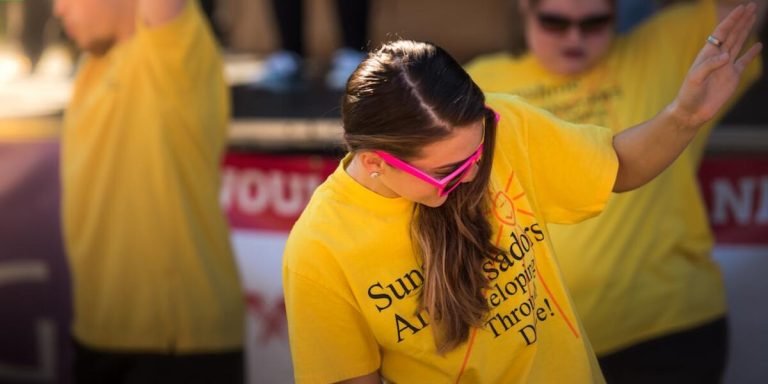Sensory Kids: Exploring the World of Sensory Play in Education
The world of sensory kids is vast, intriguing and filled with endless possibilities. This sphere involves employing tactile experiences to bolster the learning process in children who interact differently with their environment. Sensory play forms a significant part of childhood education, helping them develop awareness about their surroundings.
Sensory play isn’t simply restricted to touch alone; it spans across all five senses – taste, sound, sight, smell and of course touch itself. These special education resources are designed not just for fun but also offer great support by enhancing cognitive growth while fostering social interaction skills among kids.
Did you know?
Did you know that, according to the American Journal of Play, sensory play activates multiple areas of the brain simultaneously and can increase a child’s ability to complete more complex learning tasks?
Understanding Sensory Processing Issues in Children
One potent method for educators and parents is the use of specially designed apps that help manage these sensory challenges while also aiding learning. Apps such as Sensory Treat and SuperHEARoes utilize playful elements like games to engage with children struggling from sensory overload.
Moreover, Virtual Reality (VR) technology has surfaced remarkably in special education lending a safe environment where they can interact comfortably without feeling overwhelmed. Beyond interactive exercises using VR headsets helps them develop skills necessary for overcoming real situation hurdles.
Despite the increasing prevalence of sensory processing issues amongst youngsters today, it’s important not just understand its complexities but actively seek ways – particularly tech-based solutions- to support those affected by it.
Remember however that every child responds differently; what might work well for one may have little effect on another making personalization key when integrating technology into childhood education architecture especially within Special Education resources which needs diversification more than ever now in 2023.
Recognizing Signs of Sensory Processing Disorder (SPD)
Recognizing the signs of Sensory Processing Disorder (SPD) in sensory kids early can be instrumental in securing timely support and resources that make a significant difference. Since many children might struggle to communicate their experiences, it’s crucial for parents and educators to spot potential indicators.
Firstly, an obvious sign could be over-reactivity or under-reactivity towards certain stimuli like sound, light, touch or movement. For instance, your child may cover their ears during seemingly normal noises such as discussions at mealtime or a vacuum cleaner running – indicating hyper-responsiveness. On the other hand about hypo-responsiveness; if they seem unusually unresponsive when called upon – perhaps displaying indifference even after repeated calls – this is something worth noting too.
Additionally, children with SPD often exhibit extreme behavior in social situations due to overwhelming sensations from noise levels or physical contacts that are typical of these setups. They might either appear extremely withdrawn within group dynamics or display outbursts linked specifically with sensory overload episodes.
Difficulties performing routine tasks such as dressing up independently because textures bother them also signal possible Sensory Processing issues deserving attention. Or struggles involving fine motor skills activities like holding pencils correctly and utilizing scissors which hinge on tactile responses.
Strategies for Supporting Sensory Kids at Home and School
Supporting children with sensory processing issues, often referred to as “sensory kids,” requires a compassionate and focused approach. Both at home and school environments can pose particular challenges, but with the right strategies, we can help these kids thrive.
Firstly understanding what sensory processing is crucial. Essentially it’s how our nervous system receives messages from the senses and turns them into appropriate motor or behavioral responses. If you’ve ever felt overwhelmed by bright lights in a store or jumped at an unexpected loud noise, then on some level you have experienced difficulties in sensory processing.
One key strategy for supporting sensory kids involves structure and routine—two elements that especially benefit a child who has difficulty interpreting their environment with ease due to overwhelming stimuli.
At home: You might consider creating calming spaces where your child knows they can retreat when feeling overloaded; this could be something as simple as a teepee filled with pillows in the corner of their room.
At school: Teachers should ensure there are safe areas within classrooms too – perhaps considering individual desk partitions which limit visual stimulation while providing comfort zone for each student.
Next up is technology integration –2-3 years back it was almost impossible to think about integrating education via tech support whereas now (2023) its paramount. Encouragingly Innovation abounds here!
Essential Tools and Equipment for a Sensory-Friendly Environment
A sensory-friendly environment plays a vital role in the development and learning experience of children, especially those identified as ‘sensory kids’. Sensory-kids are sensitive to their surroundings – light intensity, noise level or tactile experiences can greatly affect them. Incorporating technology into educational settings has proven crucial in creating an inclusive space for these youngsters.
One such essential tool is interactive smart boards that facilitate easy comprehension through visual aids. They make abstract concepts tangible via graphics and animations which sensory kids find engaging rather than daunting. These customizable tools cater not only to visual learners but also encourage auditory and kinesthetic engagement by integrating sounds or supporting touch gestures respectively.
Equipment like specialized headphones can further foster a conducive teaching framework for sensory students. Background noises may be disruptive; however, when combined with adaptive technologies like noise-cancelling headphones infused with AI capabilities, they offer personalized soundscapes aligning student’s preferences hence optimising concentration levels during lessons.
Another resource includes haptic devices augmenting tactile feedback thus broadening pedagogical mediums beyond traditional print-based materials catering specifically towards special education needs (SEN). By mimicking real-life textures and movements virtually it enables hands-on experiential learning while appealing to the tactile senses of SEN participants.
Clearly technological integration provides strengths-based approaches empowering educators while ensuring category-specific resources support every child’s unique journey among its spectrum of offerings reflecting 2023’s progressive education paradigm shift towards inclusivity.
Creating Calming Spaces: Products and Techniques
Creating calming, sensory-friendly spaces can significantly contribute to a child’s overall learning experience, particularly for “sensory kids.” Integrating tailored products and utilizing specific techniques can help build an environment that facilitates these youngsters’ growth. In the realm of childhood education in 2023, various technology tools are now available that assist in this endeavor.
Start by incorporating fidget toys into your space. These simple yet effective gadgets provide an outlet for children who need constant tactile stimulation. They not only help keep ‘sensory kids’ focused but also improve fine motor skills over time.
Finally consider implementing visual aids like projection lights different shapes (Silhouettes birds butterflies etc) or slow sweeping landscapes across walls ceilings . What better way transform regular room into serene escape from real world than bringing night sky indoor?
Adaptive Learning Materials for Enhanced Educational Engagement
In the digitally savvy era of 2023, technology integration plays a pivotal role in sculpting an inclusive and supportive educational experience for sensory kids. Special education resources are evolving to incorporate adaptive learning materials that foster enhanced educational engagement.
For children grappling with sensory processing issues, traditional classroom settings can prove overwhelming. This is where adaptive learning materials enter the pedagogical scene, transforming conventional classrooms into personalized learning environments catering to diversified learner needs.
E-books have emerged as one such game-changing tool due largely to their customizable features – font style/size alteration for visually impaired students or text-to-speech options providing auditory support assist learners without compounding cognitive load. Interactive elements moreover engage tactile learners while animated illustrations break complex concepts down into manageable chunks promoting understanding among visual learners.
Tablets hold immense promise too given their multi-functional capabilities that blend entertainment and instruction seamlessly thereby avoiding monotony-inducing regularities typically associated with standard teaching methods.
Software applications focusing on specific skills facilitate targeted improvement through consistent practice e.g., fine motor skill-enhancing apps involve activities requiring precision helping pupils better control muscle movements over time; speech therapy programs allow youngsters struggling with language-expression regulate pitch/tone/speed based on real-time feedback from personified avatars resembling therapists!
Professional Guidance and Therapeutic Interventions
In this new era, one marked by the integration of technology in education and pervasive digital interactivity, our professional guidance and therapeutic interventions can be greatly improved for sensory kids. Educators and therapists are now using innovative technologies to create immersive learning environments that address the unique needs of these children. They explore potential healthcare benefits offered through virtual reality system or engaging motor skills with interactive online games.
Children with sensory processing issues require a distinct approach to ensure successful educational outcomes; this is where technological advancement plays a crucial role. Technological devices aid educators in providing customized lessons suitable for each child’s specific requirements. These resources serve as effective tools not only academically but socially too – enhancing communication abilities which further strengthen interaction among peers—a key factor often missed out during traditional classroom settings.
Remaining abreast with advancements isn’t just an option anymore—it’s becoming increasingly vital due to its significant impact on special education strategies! Embracing technology doesn’t mean abandoning tried-and-true therapies— it means augmenting them in ways that appeal particularly well to today’s digitally native youth.
The application of Artificial Intelligence (AI) gives educators insights into each kid’s developmental journey while also tracking their progress real-time—an essential function when dealing effectively with special-needs students who might otherwise fall behind unnoticed amidst standard curriculums’ hustle-bustle!
When to Seek Help: Consulting with Occupational Therapists
In navigating the educational journey of sensory kids, there are certain times when professional guidance becomes imperative. It’s crucial to recognize these moments and understand how occupational therapists can play a pivotal role. Sensory integration therapy, which is often implemented by an occupational therapist (OT), has been proven effective in helping children with sensory processing disorders.
Occupational therapists specialize in assisting children navigate their world more comfortably through therapeutic interventions tailored specifically for them based on comprehensive assessments of physical abilities and behavioral patterns.
Consultation begins by discussing your concerns about your child’s development followed by observing the child during various activities requiring different skill levels – mental agility tests to hand-eye coordination exercises; everything contributes defining tailor-made solutions for improving daily life experiences.
A collaborative approach ensures parents’ involvement alongside professionals while developing strategies aimed at fostering independence amongst special needs students creating harmonious classroom experiences encouraging better learning outcomes during 2023 technology integrated education settings too!
Integrating Therapy Into Daily Routines for Consistent Support
Ensuring a steady and consistent stream of support for sensory kids is imperative in their learning journey. A great way to do this is by incorporating therapeutic interventions within everyday activities, harmonizing therapy with the routine without making it feel out place.
These integrations are not only convenient but extremely effective as well. The daily repetition helps reinforce what’s learnt during these sessions, thereby cementing them in children’s memory better. For instance, simple chores like picking toys off the floor can be reinforced into motor exercise that aids hand-eye coordination.
Technology has an essential role here too; its integration makes education interactive and fun-filled while still being deeply instructive. Vibrant online modules or gamified lessons help grasp concepts more easily and effectively than traditional teaching methods alone could achieve.
In 2023, technological tools catering specifically towards special education have advanced substantially – opening up exciting avenues for us to explore together.
Use applications designed uniquely for enhancing various skills – they cover a wide range from reading apps helping dyslexic students read comfortably to fine-tuning gross motor skills through augmented reality games.
Conclusion
Through sensory play, ‘sensory kids’ are not just having fun; they’re also engaging in extensive learning. Encouraging these types of activities can do wonders for their development while fostering a love for exploration and discovery. As parents and educators, it is our responsibility to understand the beauty behind sensory play and work towards creating enriching environments where every child feels comfortable exploring at their own pace.
Finally, remember that education extends beyond textbooks or classrooms – take full advantage of educational opportunities present in everyday life to ensure comprehensive growth for your children! Feel free to browse around our website if you need more tips on educating children or would like further support as an educator or parent. We strive constantly to provide relevant content that propels clear understanding about childhood education’s various aspects.







